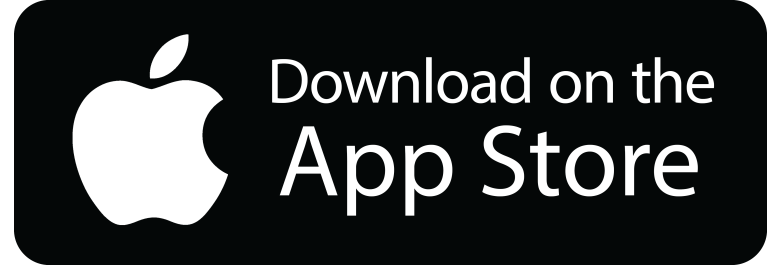The Importance of Filling In a Business Model Canvas
A well-thought-out business model canvas is vital for several reasons:
Reasons Founders Skip the Business Model Canvas
Despite its importance, some founders might neglect the business model canvas for various reasons:
Filling in Your Business Model Canvas:
To create a comprehensive business model canvas, consider the following key components and examples:
1. Value Proposition: Clearly articulate the unique benefits your product or service offers.
Example: A subscription-based meal kit service providing healthy, pre-portioned ingredients for busy professionals.
2. Customer Segments: Identify your target customer groups.
Example: Busy professionals, health-conscious individuals, and time-poor families.
3. Channels: Determine how your products or services will reach your customers.
Example: Online sales through a user-friendly website and targeted social media advertising.
4. Customer Relationships: Establish how you will interact with and retain customers.
Example: Personalised meal recommendations, responsive customer support, and a loyalty rewards programme.
5. Revenue Streams: Outline how your business will generate income.
Example: Subscription fees, à la carte meal options, and affiliate marketing partnerships.
6. Key Resources: List the essential assets required for your business to function.
Example: A network of suppliers, a robust e-commerce platform, and an efficient delivery system.
7. Key Activities: Describe the main actions your business will take to deliver value.
Example: Curating meal plans, sourcing ingredients, and managing logistics.
8. Key Partnerships: Identify strategic partners that can help your business succeed.
Example: Local farmers, nutritionists, and delivery service providers.
9. Cost Structure: Detail the primary costs associated with running your business.
Example: Ingredient costs, packaging, logistics, and marketing expenses.
A detailed business model canvas is a powerful tool for founders looking to confidently navigate the entrepreneurial landscape. By taking the time to develop a comprehensive business model, you can ensure your venture is built on a solid foundation, ready to scale and succeed in the competitive market.
Here are Examples of Innovative and Disruptive Business Models:
1. Airbnb: The home-sharing platform connects hosts with travellers seeking alternative accommodation options. This peer-to-peer model disrupted the traditional hotel industry by leveraging underutilised assets and empowering hosts to generate additional income.
2. Uber: The ride-hailing giant revolutionised the transportation industry with its on-demand service model. By connecting drivers and riders through a user-friendly app, Uber optimised resource utilisation and offered a convenient alternative to traditional taxi services.
3. Netflix: The streaming service provider transformed the entertainment industry with its subscription-based model, offering a vast library of films and TV shows on demand. By embracing data-driven content curation and investing in original programming, Netflix has maintained its competitive edge and continued to grow its subscriber base.
Developing a robust and innovative business model is essential for any entrepreneur looking to succeed in today's fast-paced and competitive market. Creo Incubator's Business Model Course is designed to guide you through creating a comprehensive and actionable business model canvas. This course will give you the skills and knowledge required to create a strong foundation for your business, propelling your venture towards growth and success.
A well-thought-out business model canvas is vital for several reasons:
- Clear Vision: It helps you crystallise your vision and goals, providing a clear roadmap to navigate the entrepreneurial landscape.
- Customer Focus: It encourages you to dive deep into your customers' world, ensuring your business stays relevant and irresistible.
- Value Delivery: A well-crafted model allows you to pinpoint your unique selling points, helping you stand out in a crowded market to woo your customers.
- Resource Optimisation: With a solid business model, you can identify the resources you need, allocate them wisely, and eliminate waste. Efficiency for the win!
- Financial Clarity: It brings financial matters to the forefront, ensuring you know how to generate revenue, manage costs, and make those pounds roll in.
- Growth Strategy: Your business model serves as a launchpad for growth, helping you identify opportunities, pivot when needed, and scale like a boss!
- Team
Alignment: A clear model unites your team, rallying them around a common
goal, and creating a shared understanding of the business vision.
Reasons Founders Skip the Business Model Canvas
Despite its importance, some founders might neglect the business model canvas for various reasons:
- Overconfidence: Founders may believe they have a clear understanding of their business and do not need to formalise their ideas.
- Time constraints: Developing a business model canvas can be time-consuming, leading some founders to focus on other tasks instead.
- Lack
of experience: New entrepreneurs may not be familiar with the concept of a
business model canvas or may not know how to fill one in.
Filling in Your Business Model Canvas:
To create a comprehensive business model canvas, consider the following key components and examples:
1. Value Proposition: Clearly articulate the unique benefits your product or service offers.
Example: A subscription-based meal kit service providing healthy, pre-portioned ingredients for busy professionals.
2. Customer Segments: Identify your target customer groups.
Example: Busy professionals, health-conscious individuals, and time-poor families.
3. Channels: Determine how your products or services will reach your customers.
Example: Online sales through a user-friendly website and targeted social media advertising.
4. Customer Relationships: Establish how you will interact with and retain customers.
Example: Personalised meal recommendations, responsive customer support, and a loyalty rewards programme.
5. Revenue Streams: Outline how your business will generate income.
Example: Subscription fees, à la carte meal options, and affiliate marketing partnerships.
6. Key Resources: List the essential assets required for your business to function.
Example: A network of suppliers, a robust e-commerce platform, and an efficient delivery system.
7. Key Activities: Describe the main actions your business will take to deliver value.
Example: Curating meal plans, sourcing ingredients, and managing logistics.
8. Key Partnerships: Identify strategic partners that can help your business succeed.
Example: Local farmers, nutritionists, and delivery service providers.
9. Cost Structure: Detail the primary costs associated with running your business.
Example: Ingredient costs, packaging, logistics, and marketing expenses.
A detailed business model canvas is a powerful tool for founders looking to confidently navigate the entrepreneurial landscape. By taking the time to develop a comprehensive business model, you can ensure your venture is built on a solid foundation, ready to scale and succeed in the competitive market.
Here are Examples of Innovative and Disruptive Business Models:
1. Airbnb: The home-sharing platform connects hosts with travellers seeking alternative accommodation options. This peer-to-peer model disrupted the traditional hotel industry by leveraging underutilised assets and empowering hosts to generate additional income.
2. Uber: The ride-hailing giant revolutionised the transportation industry with its on-demand service model. By connecting drivers and riders through a user-friendly app, Uber optimised resource utilisation and offered a convenient alternative to traditional taxi services.
3. Netflix: The streaming service provider transformed the entertainment industry with its subscription-based model, offering a vast library of films and TV shows on demand. By embracing data-driven content curation and investing in original programming, Netflix has maintained its competitive edge and continued to grow its subscriber base.
Developing a robust and innovative business model is essential for any entrepreneur looking to succeed in today's fast-paced and competitive market. Creo Incubator's Business Model Course is designed to guide you through creating a comprehensive and actionable business model canvas. This course will give you the skills and knowledge required to create a strong foundation for your business, propelling your venture towards growth and success.
Write your awesome label here.
Never miss our news!
Thank you!
Get updates on live streams, news and more right in your mailbox.



